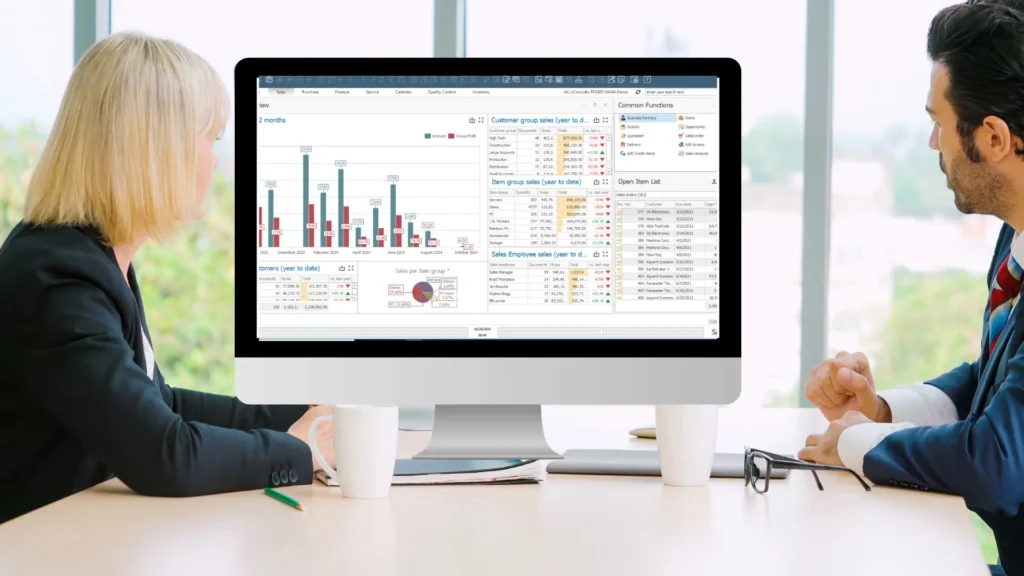ERP Implementation Step By Step Guide
A Comprehensive Guide to Successful ERP Implementation
Implementing an ERP system is a transformative process that can streamline operations, boost productivity, and improve decision-making across your organization. However, it’s no secret that ERP implementations can be complex and challenging. With proper planning, stakeholder collaboration, and expert guidance, your business can avoid the common pitfalls of ERP projects and achieve a successful implementation.
What is ERP Implementation?
ERP implementation refers to the process of deploying an enterprise resource planning (ERP) system across an organization’s departments, such as finance, sales, HR, manufacturing, and supply chain. This multi-step process involves planning, system configuration, data migration, user training, and going live.
The key to success lies in involving stakeholders, managing change effectively, and preparing your team for the transition. ERP implementation can take several months and requires meticulous attention to detail, but the rewards are well worth the effort.
The ERP Implementation Process: 7 Key Steps
A well-structured ERP implementation process ensures your system is deployed efficiently while minimizing disruptions. Let’s break it down into seven essential steps:
1. Assemble Your ERP Project Team
An ERP project requires a dedicated team to oversee its implementation. Your team should include:
- Project Manager: The leader responsible for the overall success of the project.
- Application Analyst: Handles data migration and system configuration.
- Application Developer: Customizes the system to meet specific business needs.
- QA Test Engineer: Ensures the system performs optimally through testing.
Additionally, include key stakeholders from departments like finance, sales, production, and IT to ensure the system aligns with organizational needs.
2. Create a Change Management Plan
Change management is critical for gaining organizational buy-in. Develop a plan that addresses:
- Clear communication of implementation timelines and expectations.
- Training schedules to empower employees with system knowledge.
- Stakeholder engagement to mitigate resistance to change.
3. Estimate ERP Implementation Costs
Accurately forecasting costs is vital to avoid budget overruns. Common cost factors include:
- Software Licenses: Based on user count and functionality.
- Hardware/Network Upgrades: Essential for on-premises solutions.
- Consulting and Training Fees: Often overlooked but critical for success.
- Productivity Loss: Account for temporary inefficiencies during the transition.
Pro Tip: Allocate at least 1-2% of your annual revenue to the project and ensure 10-15% of the budget is reserved for training and support.
4. Plan and Execute Data Migration
Data migration lays the foundation for your ERP’s functionality. The process includes:
- Cleansing and verifying legacy data.
- Mapping data fields between old and new systems.
- Transferring and testing data integrity.
Effective data migration minimizes disruptions and ensures accurate reporting from day one.
5. Train Your Users
User adoption is a cornerstone of successful ERP implementation. Choose a training method that fits your workforce:
- In-Person Training: Ideal for hands-on learning but logistically challenging for large teams.
- E-Learning: Flexible and scalable but requires employee accountability.
Pro Tip: Identify and train “superusers” within each department. These individuals can assist colleagues post-implementation and reduce dependency on external support.
6. Go Live with Confidence
The go-live stage marks the culmination of months of preparation. To ensure success:
- Conduct final system testing to identify and resolve issues.
- Communicate clearly with employees about system downtime and schedules.
- Monitor performance metrics closely to ensure the system runs smoothly.
7. Evaluate Your ERP Implementation
After going live, measure the success of your project by evaluating:
- Return on Investment (ROI): Assess cost savings and efficiency gains.
- User Adoption: Ensure employees are confident and productive with the new system.
- Error Reduction: Look for improvements in data accuracy and process automation.
- Customer Satisfaction: Track metrics like order processing times and service quality.
Use these insights to refine processes and maximize the benefits of your ERP investment.

Tips for ERP Implementation Success
- Start with a Clear Plan: A detailed roadmap saves time and prevents costly mistakes.
- Focus on Training: Well-trained employees are key to unlocking your ERP’s potential.
- Leverage Expert Help: Partnering with an experienced ERP consultant can reduce risks and accelerate success.
Conclusion: Your Path to ERP Success
ERP implementation is a significant investment, but when done right, it can transform your business. By assembling the right team, planning thoroughly, and prioritizing user training, your organization can maximize the value of its ERP system. Every company’s journey is unique, so customize your implementation plan to align with your goals and resources.
Ready to start your ERP journey? Contact us today to learn how we can guide you through the process with expert support and tailored solutions.
Learn More About SAP Business One ERP Here!
Follow Us For More On LinkedIn Here!


